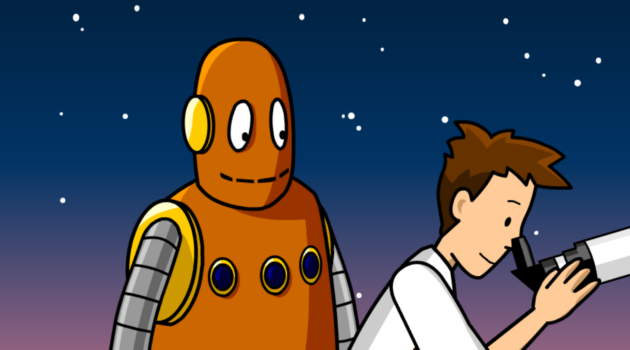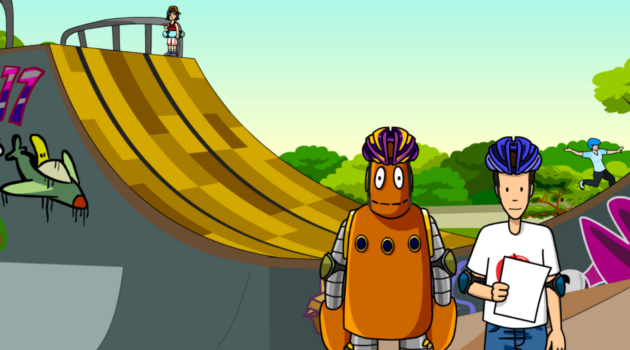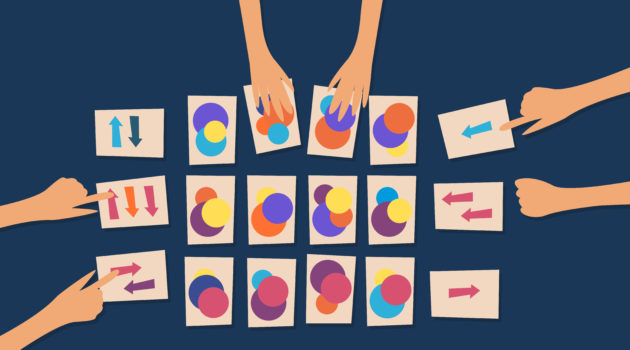Home Learning
Summer Learning Activities: Water Play

The late Mister Rogers said, “Play gives children a chance to practice what they are learning.” Summertime is a perfect time to notch up the playful learning for your family. When it’s hot out, kids love activities that involve water—sprinklers, hoses, pools, nearby rivers, ponds, lakes, or oceans.
But cooling off isn’t the only reason to encourage your kids to dive in. Water play is full of opportunities for learning. Water has the “magical” combination of being both soothing and invigorating. That magic stimulates kids of all ages. Because they take to the water naturally, kids are open to all of the possibilities that it offers. That’s the power of play!
Older children might compete to see whose cannonball makes the biggest splash. Younger children love to pour water into different sized containers or watch it disappear when they sprinkle it over sand. (They will do it over and over and over again!) To an adult observer, this might seem like idle play, but there is educational and developmental value in simply letting your kids play in and with water. The act of pouring develops motor skills and more. When children splash, swim, float, dive, or row, they create a physical, interactive relationship between the water and their own bodies that can build strength and confidence. Water play can also help children learn about important math and science concepts like volume, measurement, displacement, and buoyancy.
If you’d like to wade a little deeper, we’ve paired a selection of BrainPOP movies and games with activities that celebrate those less structured hours in the day when kids are free to play, explore, daydream, and create. Do these activities together as a family, and keep the playful learning going all summer! If you don’t have a BrainPOP subscription, sign up for a free trial to access the online learning fun.
View and Do: Sink, Swim, or Float?
Before your next waterside outing, view the BrainPOP Jr. movie Sink or Float (designed for kids in grades K-3) and the BrainPOP movie about Buoyancy (designed for kids in grades 3-8+) to build background knowledge. Then set your kids up with this simple activity to experience the concept.
What you’ll need:
- 3 identical balloons (you can also use airtight, resealable plastic bags or disposable latex gloves)
- Sand or other fine-grained solid material
- Body of water (pool, lake, large sink or tub)
What you’ll do:
- Fill one balloon with air, one with water, and one with sand. Make sure they are all the same size.
- Ask kids to predict what will happen when they place their balloons in a body of water.
- Place the balloons in the water one at a time, and observe. How does the upward force of the body of water cause the three balloons to react differently? How light or heavy do the balloons feel in the water compared to when they were out of the water?
- Encourage kids to use key vocabulary words from the movies to explain what is happening (sink, float, volume, density, Archimedes’ Principle, negative buoyancy, neutral buoyancy, and positive buoyancy).
- Play around with the balloons in the water, and see what else you observe!
Play gives children a chance to practice what they are learning.
Mister Rogers
View and Do: Make Waves
Have you ever closely examined the properties of waves? From ripples created when you drop a stone in a pond to the recurring swells that roll toward a sandy shore, waves are both fun to play in and a fascinating scientific phenomenon. The BrainPOP movie about Waves will introduce the concept, and the Waves on a String simulation and Wave Combinator game (both available on BrainPOP GameUp) will give your kids a deeper understanding of concepts like amplitude, frequency, and wavelength—and how they relate to the shape and speed of waves. Once you’ve got the basics, try this activity to make your own waves.
What you’ll need:
- Clear glass or plastic bottle with a lid
- Water
- Blue food coloring
- Clear mineral oil (baby oil)
What you’ll do:
- Fill about ⅓ of the bottle with water.
- Add a few drops of food coloring until the water is a deep blue.
- Fill the rest of the bottle with oil.
- Tighten the lid and turn the bottle on its side. You may need to let the oil and water separate and settle for a minute.
- Gently tilt the bottle back and forth to create your own ocean waves. Do you notice the crests and troughs? What do you observe about the amplitude and frequency of the waves? What other vocabulary and concepts from the BrainPOP movie, simulation, and game can kids recall?
Bonus Activity: Here’s another quick way to make some waves. Give kids a straw and ask them to blow on the surface of still water. Discuss how the waves they make are similar to the waves that occur when the wind whips up the water in the ocean.
View and Do: Water Safety and Sun Protection
Before heading to your favorite swimming spot, take a few minutes to review basic water safety tips, like these from the American Red Cross, with your family. Then, watch the BrainPOP movie on Water Safety together. And don’t forget the sunscreen! The BrainPOP Sun Protection movie explains why it’s so important to keep skin protected while we’re enjoying the outdoors.

Karen Kane is an editorial, marketing, and communications professional focused on creating meaningful print, digital, and real-world experiences for kids, parents, caregivers, and educators.






